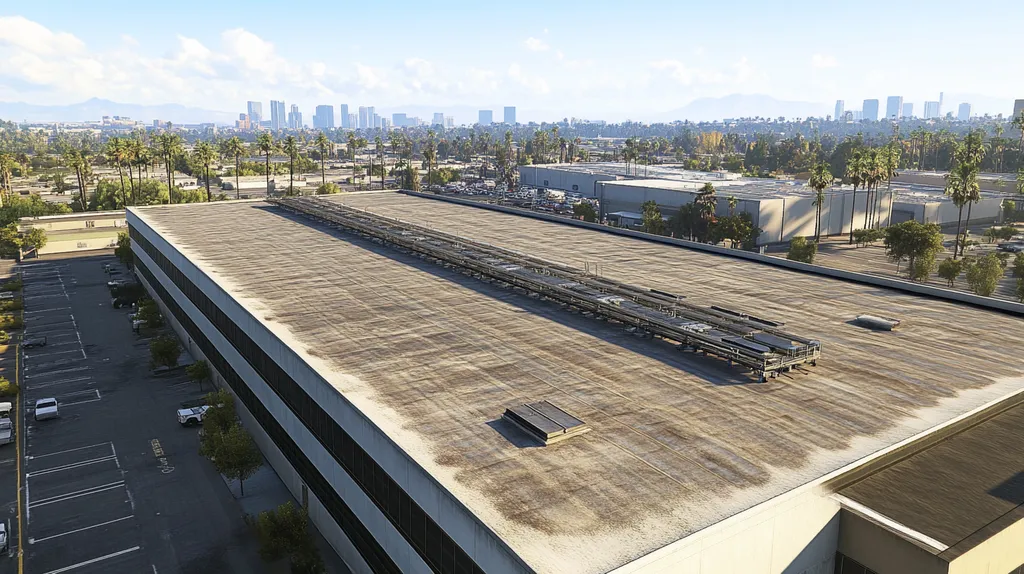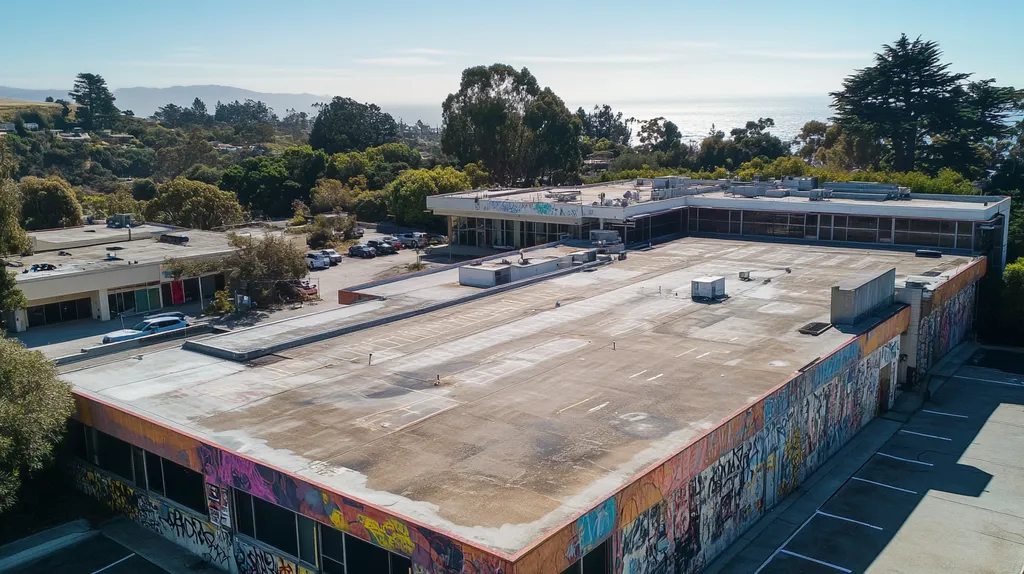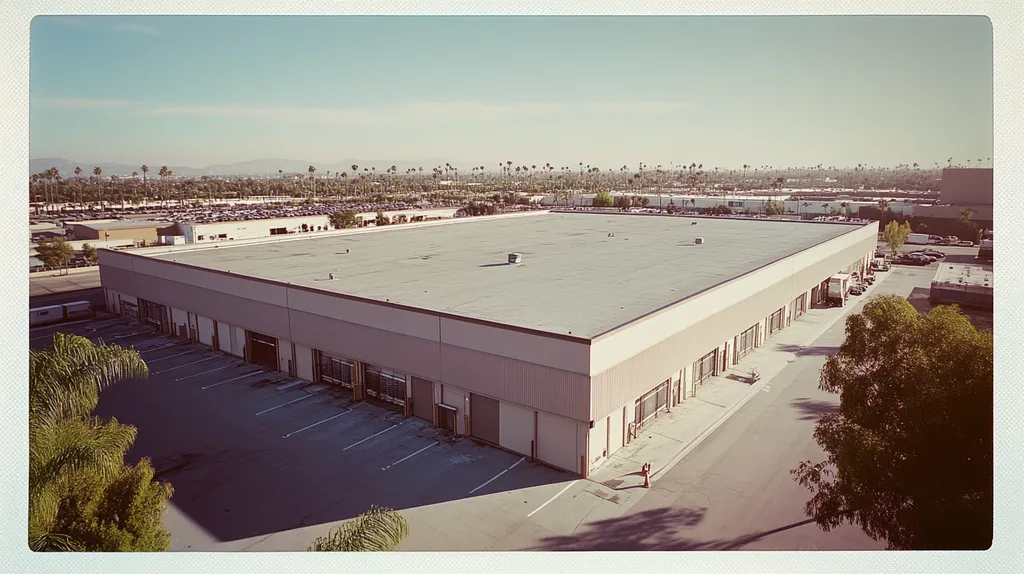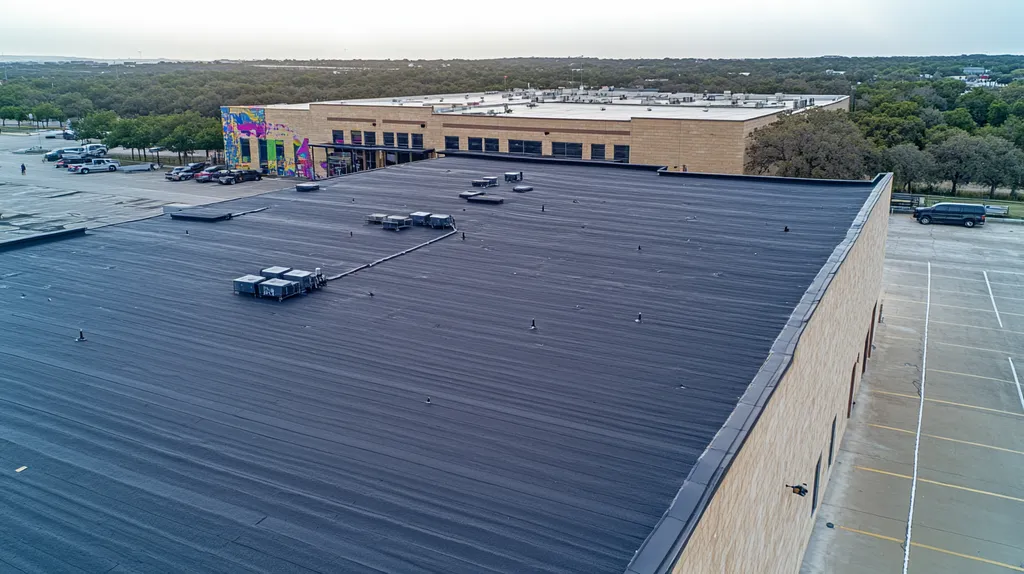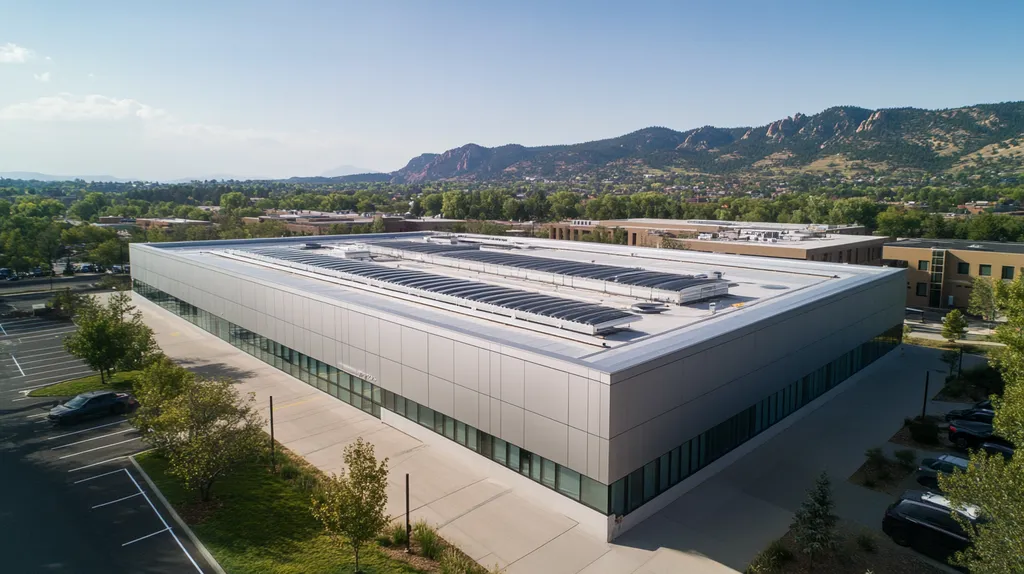Welcome to today’s Battle Royale featuring two roofing heavyweights: “LED Integrated Lighting” in the east corner versus “Daylight Harvesting Systems” in the west!
Tonight’s showdown pits these contenders against each other across six punishing rounds designed to test every aspect of their performance for Commercial Roof Performance.
At stake? Millions in potential costs, decades of building protection, and the critical performance demands of modern commercial and industrial facilities.
Our professional judging panel will evaluate each round on technical merit, real-world performance, and value delivery. After all six rounds, we’ll declare our ultimate champion.
Ladies and gentlemen, facility managers and building owners… it’s time to rumble!
ROUND 1: INITIAL COSTS & INSTALLATION
When evaluating commercial roofing lighting solutions, the initial investment and installation process can make or break project success. Property owners face critical decisions that impact both short-term budgets and long-term operational costs. Understanding the true costs and complexities of LED integrated lighting versus daylight harvesting systems helps prevent expensive mistakes and ensures optimal return on investment.
Material Expenses
The material costs of lighting systems directly impact project feasibility and ROI calculations. LED integrated lighting systems require significant upfront investment in fixtures, wiring, and control components, but their durability and efficiency offset these costs over time.
Daylight harvesting systems require sensors and automated controls that adjust artificial lighting based on natural light availability. These sophisticated components drive up initial expenses compared to simpler LED systems. (source: Energy.gov)
With both systems requiring substantial material investments but LED showing better cost predictability, LED integrated lighting gains the advantage in material expenses.
Installation Complexity
Installation complexity directly affects labor costs and project risk. LED integrated lighting systems follow standardized installation procedures that most qualified electrical contractors can execute efficiently.
Daylight harvesting installations demand precise sensor placement, extensive wiring networks, and complex control system programming. The need for careful calibration and testing extends installation time significantly.
Given the more straightforward installation process and lower risk of complications, LED integrated lighting holds the clear advantage in installation complexity.
Project Timeline
Project timeline impacts both immediate operations and return on investment realization. LED integrated lighting installations typically follow predictable schedules, with minimal variables affecting completion dates.
Daylight harvesting systems require extended installation periods for sensor calibration and system optimization. Weather conditions and seasonal lighting changes can further extend the timeline for proper system tuning.
With more predictable schedules and faster completion times, LED integrated lighting demonstrates the advantage in project timeline considerations.
ROUND 1 WINNER: LED INTEGRATED LIGHTING
ROUND 2: DURABILITY & LIFESPAN
In commercial roofing, durability and lifespan directly impact both operational costs and building asset value. Recent industry data shows that premature roofing system failures can cost businesses up to $75,000 in emergency repairs and business disruption. The choice between LED integrated lighting and daylight harvesting systems significantly influences these critical performance metrics.
Component Longevity
The durability of individual system components determines overall performance and maintenance requirements. LED integrated lighting systems feature sealed, weather-resistant fixtures designed specifically for rooftop environments, with typical lifespans exceeding 50,000 hours of operation.
These systems require minimal maintenance beyond routine inspections, as their solid-state construction eliminates most potential failure points. The integration of lighting directly into the roofing system also reduces penetration points that could compromise roof integrity.
Daylight harvesting systems incorporate multiple sensors, controls, and moving parts that are more susceptible to environmental wear. These components typically require replacement or recalibration every 3-5 years, increasing maintenance demands.
Given the superior durability and reduced maintenance requirements, LED integrated lighting shows a clear ADVANTAGE in component longevity.
Weather Resistance
Roofing systems must withstand extreme temperature fluctuations, moisture, and UV exposure. LED integrated lighting systems utilize materials specifically engineered for continuous outdoor exposure, with robust housings that maintain watertight seals.
The simplified design of LED systems minimizes potential failure points and reduces the risk of water infiltration. Their heat-resistant construction also prevents thermal stress on surrounding roofing materials.
Daylight harvesting systems require multiple roof penetrations for sensors and controls, each creating potential water entry points. Their more complex infrastructure is also more vulnerable to wind damage and thermal stress.
With superior weather resistance and fewer vulnerability points, LED integrated lighting demonstrates an ADVANTAGE in this category.
System Reliability
Roofing Today reports that integrating electrical technology like LED lighting within roofing systems can significantly improve long-term reliability through streamlined installation and reduced complexity. The coordinated approach reduces potential points of failure and simplifies maintenance procedures. (source: Roofing Today)
LED systems operate independently of external conditions, maintaining consistent performance regardless of weather or seasonal changes. Their solid-state technology eliminates common failure modes associated with traditional lighting.
Daylight harvesting systems depend on multiple interconnected components working in harmony. The complexity of these systems increases the likelihood of performance issues and requires more frequent adjustment and maintenance.
Based on operational consistency and reduced failure risk, LED integrated lighting earns the ADVANTAGE in system reliability.
ROUND 2 WINNER: LED Integrated Lighting
ROUND 3: PERFORMANCE FACTORS
In today’s high-stakes commercial environment, lighting system performance directly impacts both operational costs and workplace productivity. With energy costs rising 15-25% annually, property owners face mounting pressure to optimize their roof-integrated lighting solutions. Understanding the performance differences between LED integrated lighting and daylight harvesting systems has become crucial for maintaining competitive advantage.
Energy Efficiency
LED roof lights consume significantly less energy than traditional lighting solutions, delivering immediate reductions in electricity costs. Their advanced technology provides consistent illumination while minimizing power consumption across all operating conditions. (source: PacLights.com)
The longevity of LED systems further enhances their efficiency profile, with typical lifespans exceeding 50,000 operational hours. This extended service life eliminates the energy waste associated with frequent replacements and maintenance operations.
Daylight harvesting systems can achieve impressive energy savings during optimal conditions by maximizing natural light usage. However, their effectiveness fluctuates significantly based on weather conditions, seasonal changes, and building orientation.
With more predictable and consistent energy savings across all conditions, LED integrated lighting demonstrates the ADVANTAGE in energy efficiency.
Light Quality Control
Maintaining consistent light quality is essential for workplace safety and productivity. LED integrated lighting systems deliver precise, uniform illumination that remains stable regardless of external conditions.
These systems offer granular control over light intensity and distribution, allowing facilities to optimize lighting for specific tasks and areas. The ability to maintain consistent light levels helps reduce eye strain and improve workplace ergonomics.
Daylight harvesting systems struggle to maintain uniform light levels throughout the day. Changing cloud cover and sun position can create unwanted variations in illumination, potentially disrupting work activities.
Given their superior control capabilities and consistency, LED integrated lighting claims the ADVANTAGE in light quality control.
Operational Flexibility
Modern commercial facilities require lighting systems that can adapt to changing operational needs. LED integrated lighting systems offer immediate response times and seamless dimming capabilities that support diverse facility requirements.
These systems can be easily zoned and programmed to accommodate different schedules and activities. Their independent operation ensures reliable performance during extended hours or unusual conditions.
Daylight harvesting systems offer limited flexibility, as they remain dependent on natural light availability. This constraint can impact facilities with variable schedules or those requiring consistent lighting during off-peak hours.
Based on superior adaptability and independence from external factors, LED integrated lighting secures the ADVANTAGE in operational flexibility.
ROUND 3 WINNER: LED Integrated Lighting
ROUND 4: MAINTENANCE REQUIREMENTS
Maintenance requirements can make or break a commercial roofing investment. Industry data shows that improper maintenance leads to 70% of roof failures before their expected lifespan, resulting in millions in unexpected repairs and business disruptions. The choice between LED integrated lighting and daylight harvesting systems significantly impacts long-term maintenance strategies and costs.
Routine Inspection Requirements
LED integrated lighting systems feature minimal moving parts and sealed components, requiring only basic visual inspections during regular roof maintenance visits. These inspections typically focus on checking electrical connections and ensuring fixture seals remain intact.
The robust construction of LED systems means that most issues can be identified through simple visual checks performed by maintenance staff. When problems do occur, they’re usually isolated to individual fixtures rather than system-wide failures.
Daylight harvesting systems demand frequent sensor calibration and cleaning to maintain optimal performance. Their complex network of sensors and controls requires specialized technicians for proper inspection and adjustment.
Given the simpler inspection protocols and reduced technical requirements, LED integrated lighting shows a clear ADVANTAGE in routine inspection requirements.
Component Replacement Frequency
LED fixtures demonstrate exceptional longevity, with most units operating effectively for 50,000+ hours before requiring replacement. This translates to approximately 12-15 years of service under typical commercial usage patterns.
The solid-state construction of LED systems eliminates common failure points like filaments or ballasts. When replacements are needed, they typically involve simple component swaps that can be completed quickly.
Daylight harvesting systems require more frequent component replacements, particularly for sensors and control modules. These elements typically need replacement every 3-5 years to maintain system accuracy and efficiency.
Based on longer component lifespan and reduced replacement needs, LED integrated lighting earns the ADVANTAGE in component replacement frequency.
Maintenance Complexity
Roofing Today reports that integrated electrical solutions like LED lighting systems streamline maintenance through coordinated design and simplified access points, reducing both maintenance time and technical complexity. (source: Roofing Today)
LED systems follow standardized maintenance protocols that align with routine roof maintenance schedules. Their modular design allows for quick troubleshooting and repairs without disrupting the entire system.
Daylight harvesting systems require coordinated maintenance between multiple specialized teams. Their interconnected nature means that even minor adjustments can affect overall system performance, demanding careful calibration.
With simpler maintenance procedures and reduced technical requirements, LED integrated lighting claims the ADVANTAGE in maintenance complexity.
ROUND 4 WINNER: LED Integrated Lighting
ROUND 5: SUSTAINABILITY CREDENTIALS
As environmental regulations tighten and energy costs soar, commercial property owners face mounting pressure to adopt sustainable lighting solutions. Recent data shows buildings with outdated lighting systems spend up to 35% more on energy while falling short of emerging environmental standards. The stakes are high – choosing between LED integrated lighting and daylight harvesting systems impacts both environmental compliance and operational costs.
Energy Efficiency
Energy efficiency directly impacts both environmental footprint and operational costs. LED integrated lighting systems deliver consistent performance with up to 75% less energy consumption than traditional lighting solutions.
These systems maintain optimal efficiency regardless of external conditions, with precise digital controls enabling granular power management. Their standardized performance metrics make energy savings highly predictable.
Daylight harvesting systems can achieve significant energy reductions during optimal conditions. However, their effectiveness varies substantially based on weather patterns, seasonal changes, and building orientation.
With more reliable and consistent energy savings across all conditions, LED integrated lighting demonstrates the ADVANTAGE in energy efficiency.
Material Sustainability
The environmental impact of lighting system components extends far beyond initial installation. LED integrated lighting systems utilize highly recyclable materials and feature modular designs that minimize waste during maintenance or upgrades.
These systems typically require fewer raw materials in their construction and generate minimal waste throughout their operational life. Their extended lifespan of 50,000+ hours further reduces material consumption through decreased replacement needs.
Daylight harvesting systems require more complex components, including multiple sensors and control modules that often contain less recyclable materials. Their shorter component lifespans lead to increased waste generation over time.
Based on superior material efficiency and reduced waste production, LED integrated lighting claims the ADVANTAGE in material sustainability.
Compliance and Certifications
Daylight harvesting systems typically demand extensive sensor installation and building management system integration, increasing both installation complexity and certification challenges. (source: WPCarey)
LED integrated lighting systems align seamlessly with major environmental certification programs like LEED and ENERGY STAR. Their standardized performance metrics and proven efficiency make compliance documentation straightforward.
The variable performance of daylight harvesting systems can complicate certification efforts. Their dependence on external factors makes it harder to guarantee consistent compliance with environmental standards.
Given their reliable performance and easier certification process, LED integrated lighting earns the ADVANTAGE in compliance and certifications.
ROUND 5 WINNER: LED Integrated Lighting
ROUND 6: SPECIALIZED APPLICATIONS
Commercial property owners face mounting pressure to optimize roofing performance through advanced lighting solutions. Recent data shows buildings with inefficient lighting systems waste up to 30% of their energy budget while compromising occupant productivity. The stakes are particularly high in specialized applications where standard solutions often fall short.
High-Bay Applications
High-bay environments present unique challenges for commercial lighting systems. Ceiling heights above 20 feet demand powerful, precisely controlled illumination to maintain safe working conditions and operational efficiency.
LED integrated lighting systems excel in high-bay applications, delivering consistent, uniform illumination across large spaces. Their precise beam control and minimal light degradation ensure reliable performance throughout their operational life.
Daylight harvesting systems struggle to maintain consistent light levels in high-bay environments. The distance between roof-mounted sensors and work surfaces can lead to inconsistent readings and inappropriate light adjustments.
Given their superior performance in challenging high-bay environments, LED integrated lighting demonstrates the ADVANTAGE in this category.
Temperature-Sensitive Areas
Many commercial facilities contain areas where temperature control is critical for operations. The heat output from lighting systems can significantly impact HVAC loads and temperature-sensitive processes.
LED integrated lighting systems operate at lower temperatures than traditional lighting, minimizing their impact on climate-controlled environments. Their efficient operation reduces the cooling load on HVAC systems while maintaining consistent illumination.
Daylight harvesting systems can introduce unwanted heat gain through roof openings, particularly during peak sunlight hours. This solar heat gain often requires additional cooling capacity to maintain desired temperatures.
Based on superior thermal performance and reduced HVAC impact, LED integrated lighting claims the ADVANTAGE in temperature-sensitive applications.
24/7 Operations
Facilities operating around the clock require lighting systems that deliver consistent performance regardless of external conditions. Lighting reliability directly impacts operational continuity and workplace safety.
LED integrated lighting systems provide dependable illumination independent of time or weather conditions. Their long operational life and minimal maintenance requirements support continuous operations with minimal disruption.
Daylight harvesting systems become less effective during nighttime hours and adverse weather conditions. Their reliance on natural light makes them less suitable for round-the-clock operations.
With superior reliability and consistent performance across all operating conditions, LED integrated lighting earns the ADVANTAGE in 24/7 operations.
ROUND 6 WINNER: LED Integrated Lighting
AND THE WINNER IS…
After six grueling rounds of technical evaluation, we have our verdict… In a decisive victory, LED Integrated Lighting claims the championship belt with a clean sweep across all categories!
This powerhouse contender dominated the competition through superior durability, consistent performance, and lower maintenance demands. Its knockout punches came in energy efficiency, operational flexibility, and specialized applications where reliability is paramount.
But don’t count Daylight Harvesting Systems completely out of the fight! This challenger still packs a powerful punch in buildings with optimal solar exposure and regular daytime-only operations, where its natural light optimization can deliver impressive energy savings.
Remember folks, every building enters the ring with unique requirements. Local climate conditions, operational schedules, and specific property characteristics all influence system performance. While tonight’s match provides valuable insights, it can’t account for every variable in your corner.
Before making your final decision, consult with qualified roofing and lighting professionals who can evaluate your facility’s specific needs and conditions.
In the high-stakes arena of commercial roofing, true champions don’t just chase the latest trend – they strategically match their building’s unique requirements with proven performers. Now, let’s see that championship belt shine under those LED lights!
FREQUENTLY ASKED QUESTIONS
Q. What are commercial roof lighting installation costs?
A. Initial costs vary based on system complexity. LED systems typically have lower installation expenses due to simpler processes. Daylight harvesting requires advanced sensors and controls, leading to higher upfront costs and more complex installations.
Q. How does component durability affect industrial roof lighting?
A. Durability impacts maintenance and overall longevity. LED systems are highly resistant to environmental factors and last up to 50,000 hours, while daylight harvesting systems require frequent recalibration and component replacements, elevating maintenance needs.
Q. What performance factors should I consider for commercial roof lighting?
A. Consider energy efficiency, light quality, and operational flexibility. LED systems provide consistent energy savings and better light quality than daylight harvesting, which relies on fluctuating natural light and is less adaptable to changing needs.
Q. How often should I maintain commercial roof lighting systems?
A. LED systems require minimal maintenance, typically just regular checks during roof inspections. Daylight harvesting systems need frequent sensor calibrations and adjustments, demanding a more intensive maintenance approach to ensure optimal performance.
Q. Are LED systems more sustainable for commercial roofing?
A. Yes, LED lighting systems consume significantly less energy and are made from recyclable materials. Their longer lifespan leads to reduced waste compared to daylight harvesting systems, which often have shorter component lifespans and more complex material compositions.
Q. What lighting solutions are best for high-bay areas on commercial roofs?
A. LED integrated lighting solutions shine in high-bay environments by delivering uniform, consistent illumination. Daylight harvesting systems struggle in these scenarios due to the distance between sensors and work surfaces, potentially causing uneven light distribution.
Q. Can LED lighting systems support 24/7 operations?
A. Absolutely! LED systems provide reliable illumination regardless of external light conditions, making them ideal for facilities that operate continuously. Conversely, daylight harvesting systems depend heavily on natural light, which may not meet the needs of round-the-clock operations.


